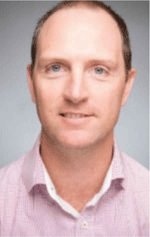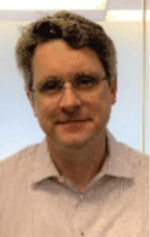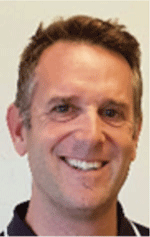Verifying the extent of plumes from produced formation water: a Wheatstone case study
Tim Robertson A , Peter Young B , Andrew Driscoll C , Jason Antenucci C , Travis Elsdon D and Paul de Lestang A EA Chevron Australia, GPO Box S1580, Perth, WA 6845, Australia.
B AECOM, GPO Box B59, Perth, WA 6849, Australia.
C DHI, PO Box 5816, St George’s Terrace, Perth, WA 6831, Australia.
D Chevron Energy Technology Company, GPO Box S1580, Perth, WA 6845, Australia.
E Corresponding author. Email: Pdelestang@chevron.com
The APPEA Journal 60(2) 518-522 https://doi.org/10.1071/AJ19056
Accepted: 4 March 2020 Published: 15 May 2020
Abstract
Chevron Australia Pty Ltd operates the Wheatstone liquefied natural gas facility in Western Australia under a Joint Operating agreement. Hydrocarbons from Wheatstone, Iago and Julimar-Brunello fields are sent to the Wheatstone Platform (the Platform), located ~50 km north of the Montebello Islands, for dewatering and dehydration before being transported onshore for final processing. Produced formation water (PW) is processed (treated) and, once criteria are met, discharged overboard. PW at Wheatstone is predicted to rapidly dilute in the receiving ocean to concentrations below water quality criteria (Australian and New Zealand Environment Conservation Council guidelines and ecotoxicology), though empirical evidence is needed to verify the actual discharge risk. Seawater (i.e. cooling water, CW) is also abstracted for cooling duty on the Platform, chlorinated and discharged. This paper describes a field verification campaign aimed at understanding PW and CW behaviour in the water column post-discharge, dilution with distance and whether numerical modelling of dilutions is accurate. The campaign was designed to evaluate plume characteristics by monitoring both entrained PW constituents (i.e. hydrocarbons and metals) and using a Rhodamine WT tracer dye. Monitoring of these constituents was done using an array of sampling techniques, including fluorometry, remotely operated vehicles and discrete water samplers. Results indicate rapid dilutions post PW and CW discharge, with dye fluorometry proving a valuable tool for understanding plume characteristics. Water sampling data interpretation indicated dilutions were likely orders of magnitude greater than anticipated, likely due to variable flow effects and turbulence induced by the Platform structure for PW, and the influence of entrained air within the plume for CW.
Keywords: fluorometry, model verification, oceanographic modelling, PW, Rhodamine, Wheatstone Platform.

Tim Robertson is an Environmental Engineer, with a BSc (Hons) in Geomechanics and Chemistry, MEng (Environmental) and 15 years of experience in research and development, consulting and industry. He has led projects for the energy, resources, defence and land development sectors across Australia, Europe, Africa and the Americas. Tim has been responsible for environmental management at oil and gas assets at all stages of the business lifecycle. His interests include fostering innovation through applied technology, analytical and numerical modelling, contaminant fate and transport, marine discharges, remediation and rehabilitation, atmospheric emissions and soil and water management. Tim currently provides technical advice and support to Wheatstone as part of the Operations team. |

Peter Young is a Marine Scientist with a master’s degree in Geospatial Science and a background in environmental impact assessment with key areas of interest in benthic habitat mapping and assessment, sediment quality and water quality monitoring and assessment in coastal and offshore marine environments. Most recently, Peter has worked to deliver technical studies in these focus areas in association with development and operational monitoring for a number of oil and gas projects in north-west Australia. |

Andrew Driscoll holds a MASc in Civil Engineering and a BSc in Physical Oceanography. He has 27 years of experience in commercial numerical modelling, including 2D and 3D hydrodynamics, waves, transport-dispersion and cohesive and non-cohesive sediment transport. He has extensive experience in the planning and execution of interdisciplinary studies, particularly studies related to the environmental optimisation of large-scale ports, dredging and reclamation projects, power/desalination/wastewater outfalls, estuarine dynamics, fine and coarse-grained morphology, wave hindcasting/penetration, the establishment of metocean design conditions and physical modelling. He holds the position of Principal Coastal Engineer and is based in DHI's office in Perth, Western Australia. |

Jason Antenucci has a PhD in Fluid Mechanics and more than 18 years of experience in coastal and metocean engineering. He has particular experience in modelling of physical processes and water quality and has published more than 45 peer-reviewed journal papers, attracting more than 2700 citations. He has been developing operational modelling systems for more than 15 years, involving real-time data integration with models to provide operational responses to key stakeholders. |

Travis Elsdon is a Marine Scientist with an PhD in Ecology from University of Adelaide. He worked as a Research Scientist (universities and Woods Hole Oceanographic Institution) and Consultant before joining Chevron’s Australian Business Unit, and now works in the Environmental Risk Assessment team for Chevron’s Energy Technology Co. He provides technical advice to projects and leads science and innovation programs to improve environmental outcomes and performance, operational efficiency and reduce environmental risk. His areas of speciality include decommissioning marine structures, monitoring design and interpretation, marine impacts, water quality and toxicity and aquatic chemistry. Travis is currently focusing on global decommissioning science, oil spill science and water discharges and toxicology. |

Paul de Lestang is a Marine Scientist with a BSc (Hons) and over 20 years of experience in coastal and marine ecology. Prior to joining Chevron Australia, Paul worked as a Senior Research Scientist for the Northern Territory Department of Primary Industries and Fisheries and as a Marine Consultant based in Perth, Western Australia. Paul’s career has included the management of invasive marine species and investigating/monitoring the impacts of underwater noise and dredging activities on marine fauna and flora. At Chevron Australia, Paul provides environmental technical advice and support on matters relating to marine ecology. |
References
Barnes, L., Hall, K., Blount, C., Hooper, M., van Senden, D., Costen, A., Scraggs, C., Provis, D., and Pygas, D. (2019). Monitoring marine effects of produced formation water discharge in Bass Strait. The APPEA Journal 59, 1–24.| Monitoring marine effects of produced formation water discharge in Bass Strait.Crossref | GoogleScholarGoogle Scholar |
Chevron (2016). Start-Up and Operations Environmental Plan. Revision 4, 12 July 2016, Document ID: WS2-COP-00001. Chevron Australia Pty Ltd.
DHI (2016). Modelling of Operational Produced Formation Water and Cooling Water Discharges from the Wheatstone Platform, Final Report prepared for Chevron Australia, DHI Report# 43801834, Chevron Document ID: WS2–3320-HES-RPT-DHI-000–00013–000, 10 February 2016. DHI.
Lee, K., and Neff, J. (2011). ‘Produced Water.’ (Springer: New York)


